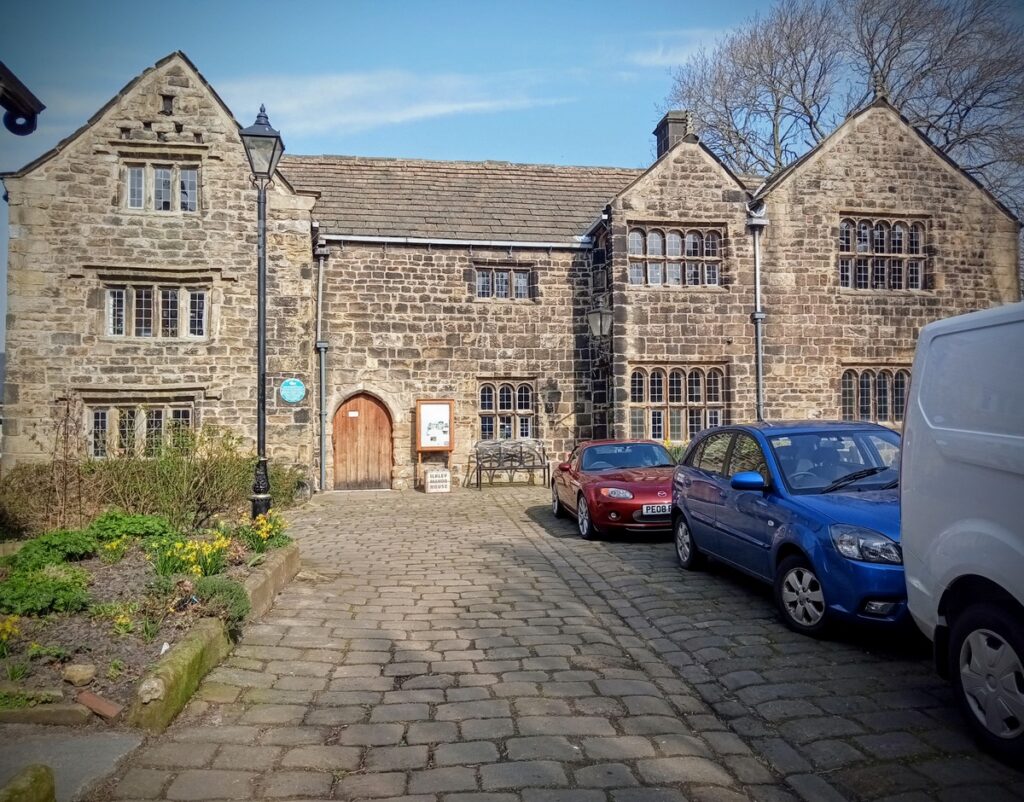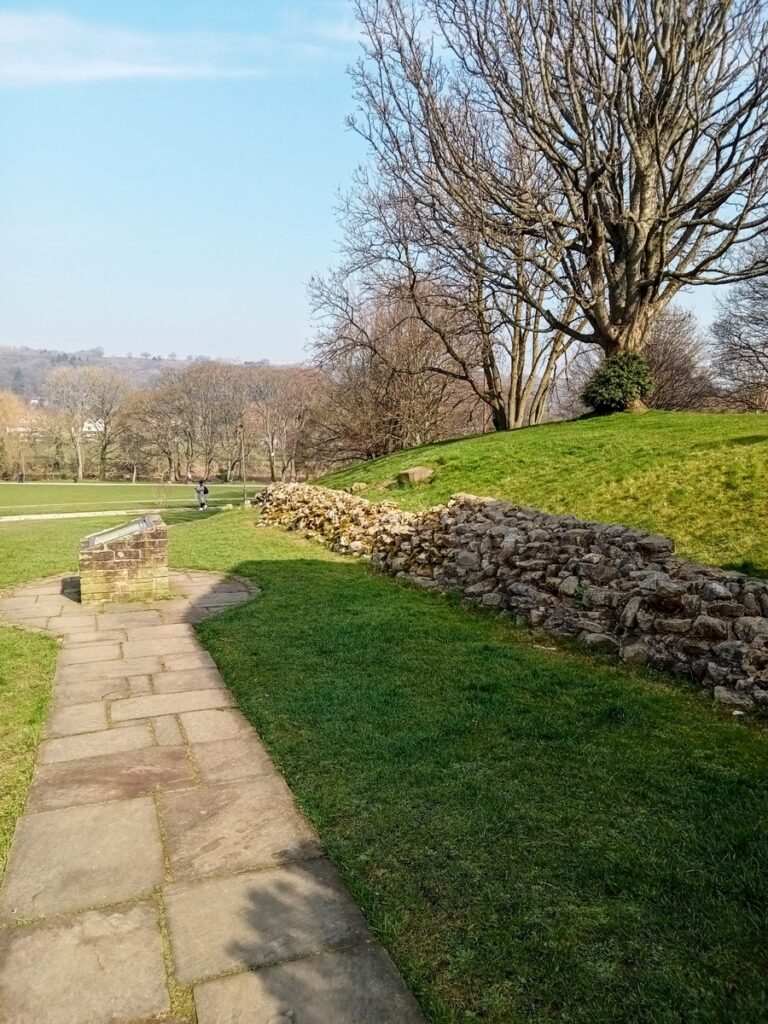
Ilkley as a town is actually fairly recent. Until its “Spa” status was established, it was simply a small village between the more important centres of Addingham and Burley-in-Wharfedale. The old bridge at the other side of the park from the manor house was the only river crossing until the new one was built in 1906 and the “main” (pretty much the only!) road came over it, along what is now Bridge Lane close to the Manor House, and up Brook St.
The cross passage area is the oldest part of the Manor House and dates from the 1300s: you can see the south side of it where the entrance door is in the photo. The room to the right of it is thought to have been the Great Hall at this time, and has a door at first floor level thought to have been part of a minstrel’s gallery. The rest of the building was built in the 1500s, with the east wing on the right of the photo being the owner’s own living quarters. The west wing to the left was the last part to be added. In the early 19th century it was divided into 4 separate dwellings but these became insanitary and neglected and in the mid 20th century, the house was recommended for demolition. Thankfully, instead the house became a museum, and remained as such for a long time, but is now run as a community resource/arts centre by a trust. Their website is here: https://www.ilkleymanorhouse.org/history-of-the-manor-house/
This site was originally chosen by the Romans to build their fort, originally thought to be named Olicana but since a stone altar to Verbeia (the goddess of the River Wharfe) was found, it is now thought to have been named after her. It was situated at the junction of several Roman roads; perhaps this, along with the proximity of the river, made it a good position for a fort. Excavations in the early 20th century suggested that it was built circa 80 AD in timber, abandoned around 100 AD and re-occupied around 169 AD. It seems to have been burnt around 196 AD, rebuilt in stone around 2 years later, and reorganised around 300 AD. If you would like to find out more details, there is more information at https://www.heritagegateway.org.uk/Gateway/Results_Single.aspx?uid=49938&resourceID=19191
Below is a photo of the west wall of the Roman fort, which has been exposed during excavations. The River Wharfe is in the background, where the line of trees is. Did the Romans feel the pull of Verbeia, its goddess, and build their fort here because of it?!

